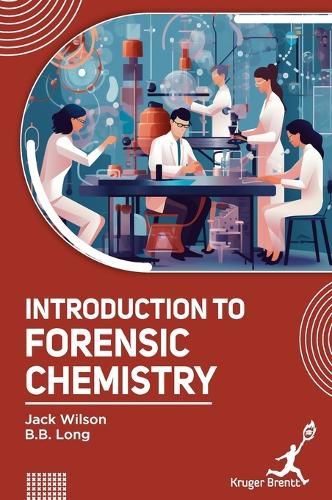Readings Newsletter
Become a Readings Member to make your shopping experience even easier.
Sign in or sign up for free!
You’re not far away from qualifying for FREE standard shipping within Australia
You’ve qualified for FREE standard shipping within Australia
The cart is loading…






This title is printed to order. This book may have been self-published. If so, we cannot guarantee the quality of the content. In the main most books will have gone through the editing process however some may not. We therefore suggest that you be aware of this before ordering this book. If in doubt check either the author or publisher’s details as we are unable to accept any returns unless they are faulty. Please contact us if you have any questions.
Fundamentals of Forensic Chemistry: Provide an overview of forensic chemistry, its role in criminal investigations, and how chemical analysis is used to detect, identify, and interpret evidence. Introduce key concepts in chemical forensics, including analytical techniques and laboratory procedures.
Techniques in Forensic Analysis: Discuss the various analytical techniques used in forensic chemistry, such as chromatography, spectroscopy (e.g., mass spectrometry, infrared, and ultraviolet), and toxicological testing. Explain how these methods help in identifying substances like drugs, poisons, and explosives.
Analysis of Controlled Substances: Explore the chemical analysis of controlled substances, including illicit drugs, prescription medications, and their metabolites. Discuss the chemical properties of common drugs and the methods used to detect them in biological samples, such as blood, urine, or hair.
Forensic Toxicology: Examine the role of forensic chemistry in toxicology, including the identification of poisons, alcohol, and other toxic substances in forensic samples. Discuss the processes involved in blood alcohol concentration (BAC) testing and the detection of poisons in autopsy samples.
Trace Evidence and Chemical Profiling: Discuss the identification and analysis of trace evidence, such as fibers, hair, paint, gunshot residue, and soil. Explain how chemical profiling techniques help link a suspect or crime scene to a criminal investigation, including the use of DNA and chemical fingerprints.
Ethical and Legal Aspects of Forensic Chemistry: Address the ethical and legal considerations in forensic chemistry, including chain of custody, courtroom testimony, and the role of forensic chemists as expert witnesses. Discuss the challenges in presenting chemical evidence in legal settings and the importance of maintaining scientific integrity.
$9.00 standard shipping within Australia
FREE standard shipping within Australia for orders over $100.00
Express & International shipping calculated at checkout
This title is printed to order. This book may have been self-published. If so, we cannot guarantee the quality of the content. In the main most books will have gone through the editing process however some may not. We therefore suggest that you be aware of this before ordering this book. If in doubt check either the author or publisher’s details as we are unable to accept any returns unless they are faulty. Please contact us if you have any questions.
Fundamentals of Forensic Chemistry: Provide an overview of forensic chemistry, its role in criminal investigations, and how chemical analysis is used to detect, identify, and interpret evidence. Introduce key concepts in chemical forensics, including analytical techniques and laboratory procedures.
Techniques in Forensic Analysis: Discuss the various analytical techniques used in forensic chemistry, such as chromatography, spectroscopy (e.g., mass spectrometry, infrared, and ultraviolet), and toxicological testing. Explain how these methods help in identifying substances like drugs, poisons, and explosives.
Analysis of Controlled Substances: Explore the chemical analysis of controlled substances, including illicit drugs, prescription medications, and their metabolites. Discuss the chemical properties of common drugs and the methods used to detect them in biological samples, such as blood, urine, or hair.
Forensic Toxicology: Examine the role of forensic chemistry in toxicology, including the identification of poisons, alcohol, and other toxic substances in forensic samples. Discuss the processes involved in blood alcohol concentration (BAC) testing and the detection of poisons in autopsy samples.
Trace Evidence and Chemical Profiling: Discuss the identification and analysis of trace evidence, such as fibers, hair, paint, gunshot residue, and soil. Explain how chemical profiling techniques help link a suspect or crime scene to a criminal investigation, including the use of DNA and chemical fingerprints.
Ethical and Legal Aspects of Forensic Chemistry: Address the ethical and legal considerations in forensic chemistry, including chain of custody, courtroom testimony, and the role of forensic chemists as expert witnesses. Discuss the challenges in presenting chemical evidence in legal settings and the importance of maintaining scientific integrity.